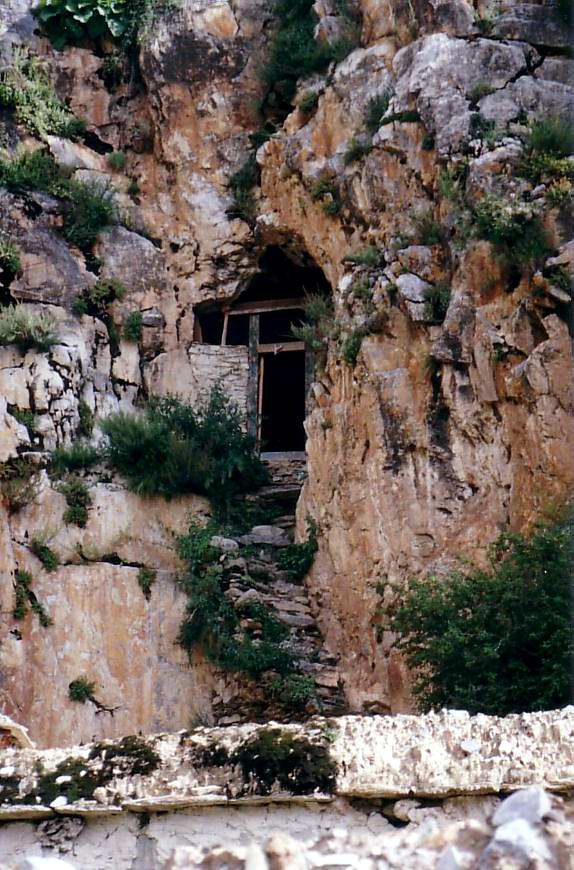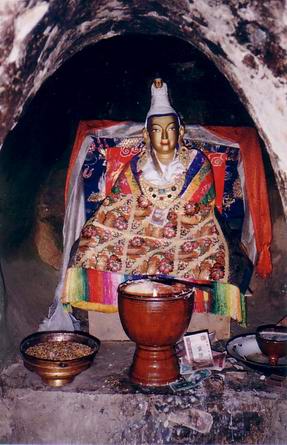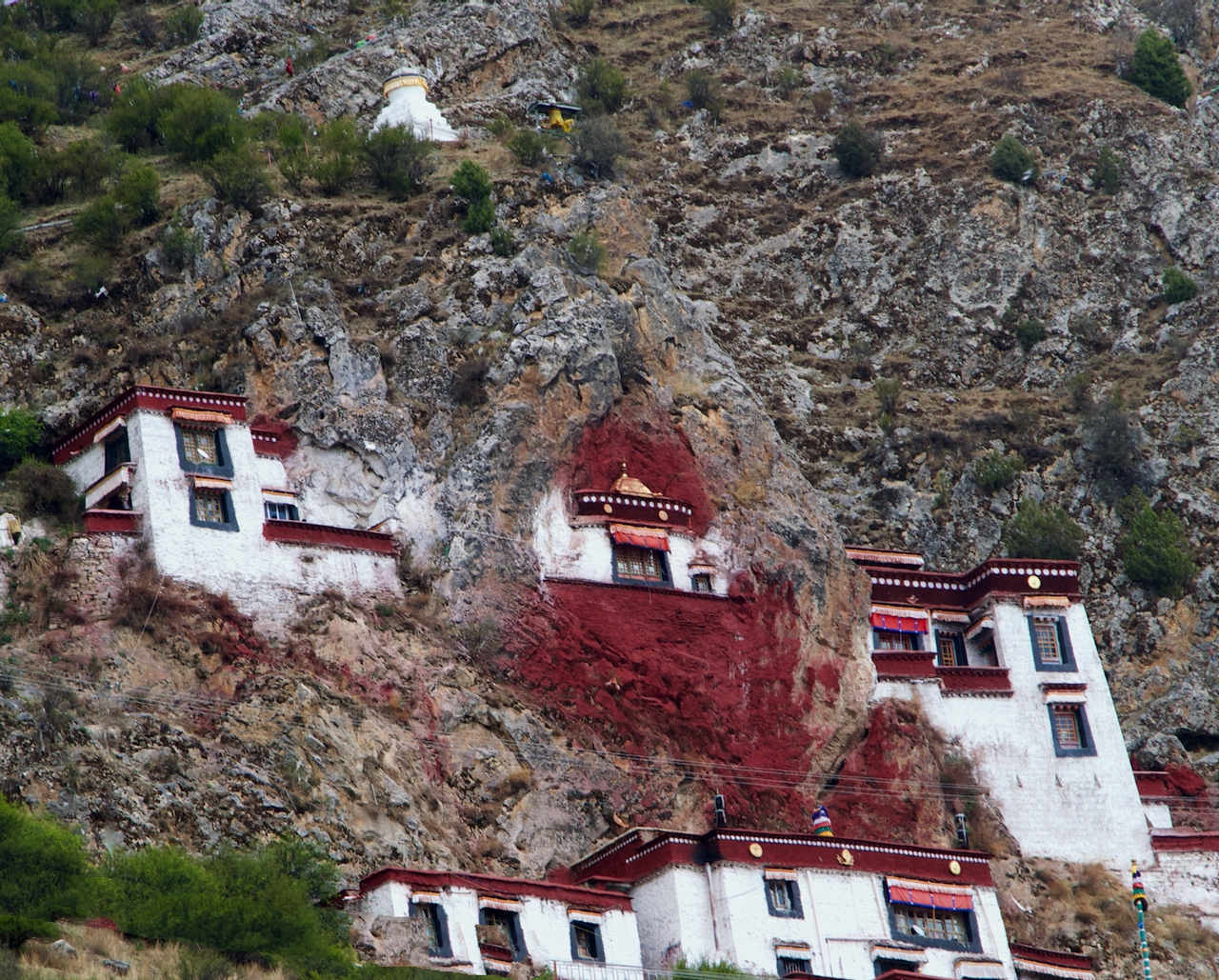7.3: Tibetan Empire (618 CE – 842 CE)
- Page ID
- 219994
\( \newcommand{\vecs}[1]{\overset { \scriptstyle \rightharpoonup} {\mathbf{#1}} } \)
\( \newcommand{\vecd}[1]{\overset{-\!-\!\rightharpoonup}{\vphantom{a}\smash {#1}}} \)
\( \newcommand{\id}{\mathrm{id}}\) \( \newcommand{\Span}{\mathrm{span}}\)
( \newcommand{\kernel}{\mathrm{null}\,}\) \( \newcommand{\range}{\mathrm{range}\,}\)
\( \newcommand{\RealPart}{\mathrm{Re}}\) \( \newcommand{\ImaginaryPart}{\mathrm{Im}}\)
\( \newcommand{\Argument}{\mathrm{Arg}}\) \( \newcommand{\norm}[1]{\| #1 \|}\)
\( \newcommand{\inner}[2]{\langle #1, #2 \rangle}\)
\( \newcommand{\Span}{\mathrm{span}}\)
\( \newcommand{\id}{\mathrm{id}}\)
\( \newcommand{\Span}{\mathrm{span}}\)
\( \newcommand{\kernel}{\mathrm{null}\,}\)
\( \newcommand{\range}{\mathrm{range}\,}\)
\( \newcommand{\RealPart}{\mathrm{Re}}\)
\( \newcommand{\ImaginaryPart}{\mathrm{Im}}\)
\( \newcommand{\Argument}{\mathrm{Arg}}\)
\( \newcommand{\norm}[1]{\| #1 \|}\)
\( \newcommand{\inner}[2]{\langle #1, #2 \rangle}\)
\( \newcommand{\Span}{\mathrm{span}}\) \( \newcommand{\AA}{\unicode[.8,0]{x212B}}\)
\( \newcommand{\vectorA}[1]{\vec{#1}} % arrow\)
\( \newcommand{\vectorAt}[1]{\vec{\text{#1}}} % arrow\)
\( \newcommand{\vectorB}[1]{\overset { \scriptstyle \rightharpoonup} {\mathbf{#1}} } \)
\( \newcommand{\vectorC}[1]{\textbf{#1}} \)
\( \newcommand{\vectorD}[1]{\overrightarrow{#1}} \)
\( \newcommand{\vectorDt}[1]{\overrightarrow{\text{#1}}} \)
\( \newcommand{\vectE}[1]{\overset{-\!-\!\rightharpoonup}{\vphantom{a}\smash{\mathbf {#1}}}} \)
\( \newcommand{\vecs}[1]{\overset { \scriptstyle \rightharpoonup} {\mathbf{#1}} } \)
\( \newcommand{\vecd}[1]{\overset{-\!-\!\rightharpoonup}{\vphantom{a}\smash {#1}}} \)
\(\newcommand{\avec}{\mathbf a}\) \(\newcommand{\bvec}{\mathbf b}\) \(\newcommand{\cvec}{\mathbf c}\) \(\newcommand{\dvec}{\mathbf d}\) \(\newcommand{\dtil}{\widetilde{\mathbf d}}\) \(\newcommand{\evec}{\mathbf e}\) \(\newcommand{\fvec}{\mathbf f}\) \(\newcommand{\nvec}{\mathbf n}\) \(\newcommand{\pvec}{\mathbf p}\) \(\newcommand{\qvec}{\mathbf q}\) \(\newcommand{\svec}{\mathbf s}\) \(\newcommand{\tvec}{\mathbf t}\) \(\newcommand{\uvec}{\mathbf u}\) \(\newcommand{\vvec}{\mathbf v}\) \(\newcommand{\wvec}{\mathbf w}\) \(\newcommand{\xvec}{\mathbf x}\) \(\newcommand{\yvec}{\mathbf y}\) \(\newcommand{\zvec}{\mathbf z}\) \(\newcommand{\rvec}{\mathbf r}\) \(\newcommand{\mvec}{\mathbf m}\) \(\newcommand{\zerovec}{\mathbf 0}\) \(\newcommand{\onevec}{\mathbf 1}\) \(\newcommand{\real}{\mathbb R}\) \(\newcommand{\twovec}[2]{\left[\begin{array}{r}#1 \\ #2 \end{array}\right]}\) \(\newcommand{\ctwovec}[2]{\left[\begin{array}{c}#1 \\ #2 \end{array}\right]}\) \(\newcommand{\threevec}[3]{\left[\begin{array}{r}#1 \\ #2 \\ #3 \end{array}\right]}\) \(\newcommand{\cthreevec}[3]{\left[\begin{array}{c}#1 \\ #2 \\ #3 \end{array}\right]}\) \(\newcommand{\fourvec}[4]{\left[\begin{array}{r}#1 \\ #2 \\ #3 \\ #4 \end{array}\right]}\) \(\newcommand{\cfourvec}[4]{\left[\begin{array}{c}#1 \\ #2 \\ #3 \\ #4 \end{array}\right]}\) \(\newcommand{\fivevec}[5]{\left[\begin{array}{r}#1 \\ #2 \\ #3 \\ #4 \\ #5 \\ \end{array}\right]}\) \(\newcommand{\cfivevec}[5]{\left[\begin{array}{c}#1 \\ #2 \\ #3 \\ #4 \\ #5 \\ \end{array}\right]}\) \(\newcommand{\mattwo}[4]{\left[\begin{array}{rr}#1 \amp #2 \\ #3 \amp #4 \\ \end{array}\right]}\) \(\newcommand{\laspan}[1]{\text{Span}\{#1\}}\) \(\newcommand{\bcal}{\cal B}\) \(\newcommand{\ccal}{\cal C}\) \(\newcommand{\scal}{\cal S}\) \(\newcommand{\wcal}{\cal W}\) \(\newcommand{\ecal}{\cal E}\) \(\newcommand{\coords}[2]{\left\{#1\right\}_{#2}}\) \(\newcommand{\gray}[1]{\color{gray}{#1}}\) \(\newcommand{\lgray}[1]{\color{lightgray}{#1}}\) \(\newcommand{\rank}{\operatorname{rank}}\) \(\newcommand{\row}{\text{Row}}\) \(\newcommand{\col}{\text{Col}}\) \(\renewcommand{\row}{\text{Row}}\) \(\newcommand{\nul}{\text{Nul}}\) \(\newcommand{\var}{\text{Var}}\) \(\newcommand{\corr}{\text{corr}}\) \(\newcommand{\len}[1]{\left|#1\right|}\) \(\newcommand{\bbar}{\overline{\bvec}}\) \(\newcommand{\bhat}{\widehat{\bvec}}\) \(\newcommand{\bperp}{\bvec^\perp}\) \(\newcommand{\xhat}{\widehat{\xvec}}\) \(\newcommand{\vhat}{\widehat{\vvec}}\) \(\newcommand{\uhat}{\widehat{\uvec}}\) \(\newcommand{\what}{\widehat{\wvec}}\) \(\newcommand{\Sighat}{\widehat{\Sigma}}\) \(\newcommand{\lt}{<}\) \(\newcommand{\gt}{>}\) \(\newcommand{\amp}{&}\) \(\definecolor{fillinmathshade}{gray}{0.9}\)Introduction
The Tibetan Empire (7.3.1) was vast and extended across southern, eastern, and central Asia. Emperor Songsten Gampo initially unified the region. The terrain in the region was rugged, lacked cohesive transportation, and was ruled by competitive districts before King Gampo. As part of consolidating territory, the emperor controlled the Chinese trade routes. Emperor Gampo had six consorts, four of them native to the region, and two were from other countries. The wives significantly influenced Buddhism in Tibet, especially the Chinese Princess Wencheng and Princess Bhrikuti from Nepal. Songsten Gampo also started the official language of Tibet; the religious and language continuity helped to unify the country.

Warfare was a standard status of life in Tibet as they battled surrounding groups. The government had no full-time army and only pressed men into service as needed. The warriors were known for their armor and exceptional capability of using swords. They did not carry their supplies and depended on ransacking and pillaging the villages they conquered. Tibetan body armor was called lamellar armor (7.3.2) and was constructed in horizontal rows made with small plates sewn together with leather strips. Each row overlapped the other row upwards, an unusual structure. This body armor style started around the 7th century and was used until the 17th century. The warrior usually carried a sword and spear, a bow, and a quiver of arrows. Helmets were also part of the battle wear and could be elegantly decorated. Even the horses were protected with armor.
Du You (735-812) wrote in his text, the Tongdian: "The men and horses all wear chain mail armor. Its workmanship is extremely fine. It envelops them completely, leaving openings only for the two eyes. Thus, strong bows and sharp swords cannot injure them. When they do battle, they must dismount and array themselves in ranks. When one dies, another takes his place. To the end, they are not willing to retreat. Their lances are longer and thinner than those in China. Their archery is weak, but their armor is strong. The men always use swords; then they are not at war they still go about carrying swords."[1]

The people of Tibet seldom wrote about their empire, and most of Tibetan history was recorded by the Tang Dynasty in China. The Old Book of Tang states:
"They grow no rice but have black oats, red pulse, barley, and buckwheat. The principal domestic animals are the yak, pig, dog, sheep, and horse. There are flying squirrels, resembling in shape those of our own country but as large as cats, the fur of which is used for clothes. They have abundance of gold, silver, copper, and tin. The natives generally follow their flocks to pasture and have no fixed dwelling-place. They have, however, some walled cities. The capital of the state is called the city of Lohsieh. The houses are all flat-roofed, and often reach to the height of several tens of feet. The men of rank live in large felt tents, which are called fulu. The rooms in which they live are filthily dirty, and they never comb their hair nor wash. They join their hands to hold wine, and make plates of felt, and knead dough into cups, which they fill with broth and cream and eat the whole together."[2]
The Tibetan Empire was one of the mightiest, yet underrated empires in history. Their rise to the world stage was accompanied by the introduction of Buddhism into the region. So in this episode, we look at the rise and fall of this powerful empire.
Yerpa
Yerpa is in a valley surrounded by spectacular limestone cliffs. The mountainous cliffs are filled with deep crevices and caves, and the location has become one of the significant and earliest sites for meditation in Tibet. Yerpa is the place where emperor Songsten Gampo and his queens came, founded a temple, meditated, and practiced yoga. Throughout time, other prominent monks and Buddhists have spent time in the caves to pray.
The Yerpa Drubde monastery (7.3.3) was constructed on the steep hillside, now in ruins. The monastery was located below the nearby caves (7.3.4), where the monks and other penitents stayed to pray and meditate. Many caves were enhanced with stairs for easy access and chapels inside for prayer. Inside the Cave of Songsten Gampo (7.3.5), a statue was created in the emperor's image as he would appear during meditation. Other caves also had statues, particularly those where a notable person frequently used the cave for prayer.
Temples were constructed in front of different caves (7.3.6), and over 300 monks lived there until 1959, when the Chinese Cultural Revolution destroyed the temples. In the 20th century, the area was destroyed and rebuilt as the Chinese government now controls Tibet. The number of monks at the site is strictly controlled.



Yerpa ( Drak Yerpa ) is only a short drive to the east of Lhasa, Tibet, and consists of a monastery and a number of ancient meditation caves that used to house about 300 monks.
Additional text/introduction.
Valley of the Kings
The Egyptians buried their rulers in the Valley of the Kings, and so did the Tibetans.
The Tibetan Valley of the Kings is situated in the Chongye Valley and was the burial ground of some Tibetan kings. Currently, nine tomb mounds have been found with the remains of Tibetan rulers, including a temple constructed at the site in the 13th century (x.x) to honor Songsten Gampo. The site is about 2,076 meters long and 1,407 meters wide, with each tomb a different size. Initially, the tombs were high and covered with piled stone, forming a flat top. Over time, the tombs have eroded and become rounded. Ten burial mounds are oriented towards a specific mountain, including four mounds facing Mount Gonpo, and three are oriented in the cardinal directions. A strong connection with Mount Gonpo is tied to the creation of the Tibetan people, and the alignment of the tombs to the mountain attests to the legitimacy of the ruler.[3]
The entrance to the area had a pair of stone lions standing 1.55 meters high. The stele of Tride Songsten was inscribed with a sun, moon, snakes, and a dragon, all noting his achievements. Songsten Gampo's tomb has not been wholly excavated; however, according to the Tibetan Annals, the tomb contained examples of his great wealth, including gold and silver objects. Inside the old temple is a unique statue of Songsten Gampo (7.3.7), surrounded by statues of his Chinese wife and Nepalese wife. Indian deities fill the background of the mural. Several historical annals portrayed over thirty tombs for kings and their concubines, all buried in different parts of the Valley of the Kings.


Burial
How different civilizations performed rituals for the deceased varied by culture, environment, and religious beliefs. Sky burials were a common custom for those following some forms of Buddhism, especially in Tibet. The Buddhists believe in transmigration – once a person is deceased, the spirit is no longer there, and the body is of no use. Also, in Tibet, the disposal of the body was difficult. The environment was inhospitable and located above the tree line, so wood could not be used for cremation. The soil was either too rocky, frozen with permafrost, or covered in snow, and it was impossible to dig a grave. The Tibetans used the ritual process of sky burial. They created a sky burial site (7.3.9) in the nearby mountains and placed the body of the deceased on the site. The body was either eaten by birds of prey or natural decomposition occurred. "After the vultures consumed the body, the belief is that they take the body away to heavens where the soul of the deceased person remains until they are ready for their next reincarnation."[4] Death is viewed as a transition instead of an ending because the Tibetans believed in reincarnation, and leaving no trace of the physical body is an advantage.
Sky burial is a ritual of great religious significance. In Tibet Buddhism. People’s bodies are merely vessels, and the spirit of the deceased does not perish through physical death. It is taken by the holy bird, vultures, to heaven, where it is reincarnated into another circle of life, never to die.
Gold
"Tibetan gold and silver artworks were recorded in Tang literal documents and enjoyed great fame throughout the world for their unique and exquisite styles, but their samples have been seldom discovered."[5] A limited number of archaeological excavations were done in Tibet until recently. Only small numbers of gold, silver, or silk artifacts were discovered, and the artifacts gave no clue about the Tibetans' production methods.
However, the Tang historian Edward Schafer wrote: "Though Iran may have been the ultimate source of the art of beating golden vessels and the ultimate inspiration of many of the designs worked on them by the artisans of the Tang, it appears that Tibet must also be given an important place among the nations whose craftsmen contributed to the culture of Tang. To judge by records of tribute and gifts from Tibet to Tang, which repeatedly list large objects of gold, remarkable for their beauty, rarity and excellent workmanship, the Tibetan goldsmiths were the wonder of the medieval world."[6]
Because the Tibetans were nomadic, their possessions were portable, and small gold objects displayed one's status. The gold cup (7.3.10) is simple in design while demonstrating the owner's level of wealth. The base of the cup is like the typical designs of the lotus flower, with each petal perfectly formed.

[1] Beckwith, C. (1987). The Tibetan Empire in Central Asia: A History of the Struggle for Great Power among Tibetans, Turks, Arabs, and Chinese during the Early Middle Ages, Princeton University Press.
[2] Beckwith, C. (1987). The Tibetan Empire in Central Asia. Princeton University Press.
[3] Romain, W. (2022). Tombs of the Tibetan Emperors: Divine Descent and Mortal Remains in the Chongye Valley”, Revue d’Etudes Tibetaines, (63) p.242.
[4] Anthropological Perspectives on Death
[5] Huo, W. (2012). A Study of ancient Tibetan gold and silver ware. Chinese Archaeology, 12(1), 165-174.
[6]Tibetan Inscriptions on Ancient silver and gold Vessels and Artefacts, Amy Heller, Journal of the International Association for Bon Research, Volume 1 Inaugural Issue (2013)


